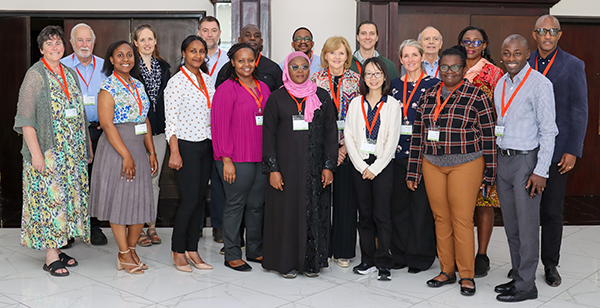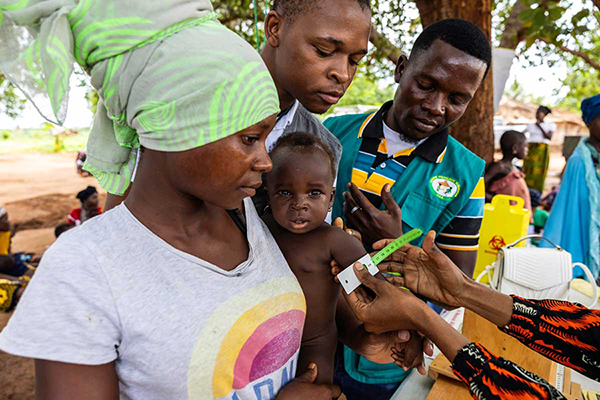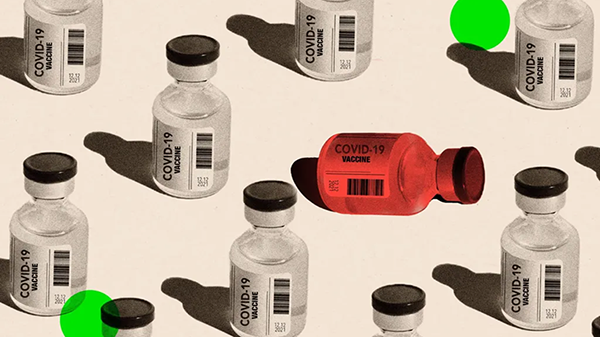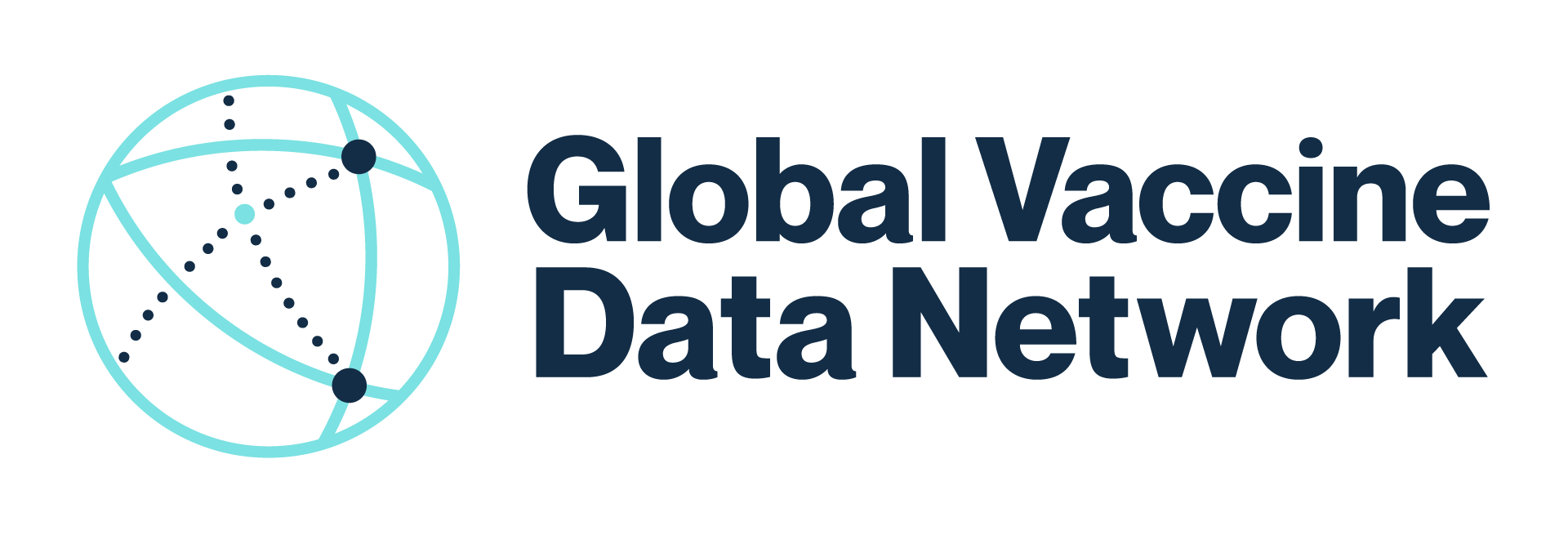
BRAVE: Background rates of adverse events for vaccine evaluation in AfricaThe surveillance for adverse events following immunisation (AEFI) in most low- and middle-income countries (LMICs) is passive and suffers from gross underreporting, incomplete reports, lack of denominator data, and reporting bias towards events that occur closer to the vaccination. There is a need to supplement and strengthen the existing vaccine safety surveillance efforts in these countries. While temporal association with receipt of a vaccine dose is not evidence of a causal association, in the absence of other information, this causal link is often made by the public. Inappropriate assessment of vaccine safety data can also severely undermine vaccine safety monitoring, communication, and public confidence in new and existing vaccines. Vaccine misinformation, increasingly disseminated rapidly by social media, incorporates safety concerns as the dominant content theme, highlighting the need to be able to respond rapidly with factual, locally relevant information. Knowing the background rates of events, i.e., the rate the event would occur in a given population in the absence of receipt of a vaccine of interest, assists with the early and rapid assessment of AEFI. Limitations in the availability of locally generated background rates data led to a historical reliance on globally generated data in African countries. However, African populations are known to respond differently to some infections and vaccination and data generated outside of Africa may not be an appropriate comparison. Additionally, pre-existing vaccine safety data will not exist for emerging vaccines that target diseases endemic to Africa and that are introduced directly into Africa. The Global Vaccine Data Network (GVDN) and African Coordinating Center (ACC) at the African Leadership in Vaccinology Expertise (Wits-Alive), based at the University of the Witwatersrand in South Africa have partnered with Navrongo Health Research Center in Ghana, International Foundation Against Infectious Diseases in Nigeria, Eagle Research Center in Rwanda, and Health Research Operations Kenya (operating as KEMRI-Wellcome Trust Research Programme) in Kenya to provide background rates through the Background Rates of Adverse Events for Vaccine Evaluation in Africa project. The Coalition for Epidemic Preparedness Innovations (CEPI) is supporting this comprehensive monitoring—specific to African populations—with funding up to US$9.9 million. The project will leverage a platform developed by Wits-Alive and GVDN for the African COVID-19 Vaccine Safety Surveillance (ACVaSS) study (2021–2023). Funded by Gavi, The Vaccine Alliance, ACVaSS was the only active vaccine safety surveillance study to estimate the risk of adverse events in Africa during the COVID-19 pandemic. Establishing local background rates of adverse events of special interest (AESI) will support interpretation of potential safety signals in the proper context and decision making and communications by public health officials to build public confidence in vaccines. An initial focus on establishing background rates for AESI potentially related to Lassa fever (LF) and LF vaccines under development in CEPI's portfolio will enable the interpretation of any AESI observed during these clinical trials. Read the blog Bringing together all the pieces of the Lassa fever vaccine puzzle for more information about CEPI's work with Lassa fever vaccines, building on strong regional leadership to help alignment across collective disease response efforts, and preparation for equitable access to vaccines as they become licensed. CEPI and GVDN are committed to enabling equitable access to the outputs of this CEPI-supported programme, in line with CEPI’s Equitable Access Policy. Project results will be published on GVDN’s public dashboard and made freely available for the benefit of the global scientific community. Written by Karin Battya PGDipPH (Dist) and Clare Cutlandb BSc, MBBCH, DCH, PhD a. Medical Writer & Research Associate at GVDN and the University of Auckland b. Associate Professor and Reader at the University of the Witwatersrand, Scientific Coordinator of the AfricanLeadership in Vaccinology Expertise (Wits-Alive), and BRAVE Project Lead at the African Coordinating Center.  BRAVE Project kick-off meeting in South Africa, October 2024 In-person participants from left to right: Back row: Steve Black (a), Clare Cutland (b), Jim Buttery (a,c), Patrick Ansah (d), Tapiwa Matsika (a), Ben Atkins (a,c), Andy Stergachis (e), Abimbola Opadeyi (f), Stephen Rulisa (g). Front row: Hazel Clothier (a,c), Kimberley Gutu (b), Luam Ghebreab (a), Wangeci Kagucia (h), Amina Mohammad (f), Judith Hammond (a), Arier Lee (a,i), Jennifer Griffin (a), Nana Ansah (d), Bernard Ebruke (f). (a) GVDN; (b) African Leadership in Vaccinology Expertise (Wits-Alive), South Africa; (c) Murdoch Children’s Research Institute, Australia; (d) Navrongo Health Research Centre, Ghana; (e) University of Washington, U.S.; (f) International Foundation Against Infectious Diseases (IFAIN), Nigeria; (g) Eagle Research Centre, Rwanda; (h) Health Research Operation/KEMRI-Wellcome Trust Research Programme, Kenya; (i) Waipapa Taumata Rau, University of Auckland.
|
Validating a proposed case definition for vaccine-induced immune thrombocytopenia and thrombosisThe process of refining public health definitions ensures their accuracy and relevance. This approach is evident in the validation of terms within adverse event of special interest (AESI) lists by the Safety Platform for Emergency vACcines (SPEAC). Recently, Brighton Collaboration and SPEAC, funded by CEPI (Coalition for Epidemic Preparedness), validated a case definition for vaccine-induced immune thrombocytopenia and thrombosis (VITT). VITT is a syndrome linked to COVID-19 adenovirus-vectored vaccines, triggered by anti-platelet factor 4 antibodies. Key aspects of the definition include:
Read the full article at Validation of the newly proposed Brighton Collaboration case definition for vaccine-induced immune thrombocytopenia and thrombosis.
Living systematic review on safety of Chikungunya vaccines now availableIn collaboration with Instituto de Efectividad Clínica y Sanitaria (IECS) and Tulane University, SPEAC’s Special Populations team has launched the Chikungunya Living Systematic Review focused on the safety, effectiveness, and immunogenicity of Chikungunya (CHIKV) vaccines. What is a living systematic review?Living systematic reviews (LSR) are comprehensive literature reviews that are continually updated, incorporating relevant new evidence as it becomes available when published in databases and clinical trial registries, which is used to conduct meta-analyses for various safety, immunogenicity and efficacy endpoints. A robust methodological framework, including PRISMA guidelines for reporting, ensures high-quality evidence synthesis. Inclusion of a diverse range of populations, such as children, pregnant persons, and adults, allows for a comprehensive evaluation of vaccine safety and efficacy among key at-risk groups. Interactive insightsThe LSR findings are publicly accessible through an interactive dashboard that includes a description of the methods and key outputs, and a web-based tool that provides automated meta-analyses and proportion analyses to evaluate the safety, immunogenicity and efficacy/effectiveness of specific vaccines or platforms on selected populations. Protocols and transparencyThe two CHIKV protocols (pregnant individuals and infants, children, adolescents) were registered on PROSPERO on March 4, 2024.
New companion guide for single organ cutaneous vasculitisThe Brighton Collaboration, under the CEPI-funded SPEAC Project, has released a companion guide for single organ cutaneous vasculitis (SOCV). This guide provides standardised tools to support vaccine safety assessments and pharmacovigilance efforts worldwide. The companion guide includes:
SOCV is a small vessel vasculitis of the skin, classified as an AESI for vaccines utilising vesicular stomatitis virus (VSV) vectors, including vaccines in development for Marburg Virus and Lassa Fever. The SOCV companion guide is available on Zenodo and can be cited using a Digital Object Identifier (DOI).
|
Harmonised adverse event reporting is essentialSince its establishment in 2000, the Brighton Collaboration has developed 74 case definitions for adverse events following immunization (AEFI) and adverse events of special interest (AESI), which are critical for supporting vaccine safety research throughout a vaccine’s lifecycle. When a potential vaccine safety signal requires urgent investigation, harmonised reporting of AEFI/AESI allows identification and comparison of similar prior reports across multiple global databases. This is especially so for rare AEFIs and AESIs that require data from very large numbers of vaccine recipients. Case definition companion guides enhance the harmonisation of vaccine safety assessments. They provide a standardised global reference and consolidated Safety Platform for Emergency vACcines (SPEAC) resources and tools for selected high-priority case definitions. Companion guides are accessible through individual case definition webpages.
|

Bridging vaccine safety adversomics research in low- and middle-income countriesThe International Network of Special Immunization Services (INSIS) aims to advance our understanding of the biological mechanisms underpinning rare adverse events following immunisation (AEFI). Vital to this work is to ensure study findings are applicable to people around the world, not just to those in high-income countries. This requires developing and implementing strategies to collect data and biosamples on people with adverse events and vaccinated healthy people in low- and middle-income countries (LMICs). To address this gap, INSIS has built strong partnerships with the Global Vaccine Data Network (GVDN), South Africa's University of the Witwatersrand through their Vaccines and Infectious Diseases Analytics Research Unit (Wits VIDA) and the African Leadership in Vaccinology Expertise (Wits-Alive) network, which includes Kenya's KEMRI-Wellcome Trust Research Programme. With funding via the Canadian Institutes of Health Research-Coalition for Epidemic Preparedness Innovations Leadership Award in Vaccine Research, INSIS Principal Investigator, Professor Karina Top is leading a mixed methods study with these partners to understand the challenges of vaccine safety monitoring during the COVID-19 pandemic and identify opportunities for incorporating systematic data and sample collection for AEFI investigation into future vaccine campaigns. Researchers at KEMRI-Wellcome will also pilot sample collection for genetic studies to contribute to the GVDN Genomics of COVID-19 vaccine-related adverse events study and assessing feasibility of implementing this approach. This research aims to inform protocols for “AEFI X” investigation that support inclusion of participants in LMICs in vaccine adversomics studies. The progress to date and initial results were shared by Top at the Canadian Immunization Conference in November 2024. Learn more about INSIS by visiting their website or LinkedIn page.
|

Three years of global COVID-19 vaccine safety: What we’ve learned and what still surprises usThe past three years of monitoring COVID-19 vaccine safety across 22 countries have provided an unparalleled opportunity to strengthen vaccine safety science. While much of the work will soon be published in peer-reviewed journals, some of the most intriguing insights and unexpected challenges may not make it into formal research papers. 1. The rare can be predictable—But not alwaysEarly on, we focused on identifying potential rare adverse events, such as myocarditis, Guillain-Barré syndrome (GBS), and vaccine-induced immune thrombosis with thrombocytopenia (VITT). Over time, patterns emerged—certain groups were at higher risk, and timing post-vaccination was often consistent. But the unpredictability of how different populations and healthcare systems report these cases means that global vaccine safety monitoring remains both a science and an art. 2. Background rates matter more than we thoughtOne of the biggest challenges in vaccine safety research is determining what’s expected versus what’s unusual. Many countries lacked good baseline data on conditions like myocarditis before the pandemic, making it difficult to assess risk in real time. As a result, some early safety concerns caused unnecessary alarm until robust background rates were established. This reinforced the need for ongoing epidemiological studies—not just during crises. 3. Vaccine safety signals travel faster than scienceSocial media and rapid news cycles have drastically changed how vaccine safety issues unfold. A potential safety signal can now go viral within hours, long before scientific investigations can confirm or refute it. This has challenged researchers to communicate findings faster while ensuring accuracy—a delicate balance in an age of misinformation. 4. Pregnancy and vaccination: A data desert no morePregnant people were initially excluded from COVID-19 vaccine trials, leaving an evidence gap that fuelled hesitancy. The past three years have been critical in filling this gap. By systematically monitoring maternal and neonatal outcomes, we now have strong data confirming the safety of COVID-19 vaccines during pregnancy. But the lesson remains: future vaccine trials need to proactively include pregnant individuals where possible. 5. The power (and limitations) of real-time monitoringThe ability to conduct near real-time safety surveillance—through rapid cycle analysis—has been a game-changer. It has allowed us to detect, investigate, and contextualise potential safety concerns far more quickly than in past vaccine rollouts. However, real-time data is only as good as the underlying infrastructure. Countries with fragmented health records or limited electronic databases still face significant barriers to rapid safety assessments. Looking aheadThe COVID-19 vaccine safety studies have advanced the field in ways that will outlast this pandemic. As new vaccines emerge for infectious diseases like RSV and influenza, we have stronger global networks and tools for monitoring safety. But challenges remain—particularly in ensuring timely, transparent communication to maintain public trust. |

'Radio Polio': How free radio in Mozambique is helping keep kids safeFamiliar voices speaking local tongues are getting the vaccination message out there, found Winile Ximba in Matola.  A mother and her child amidst health workers during a vaccination session in Mozambique. In this article, published by VaccinesWork (Gavi, The Vaccine Alliance), reporter Winile Ximba highlights how a network of community radio stations across Mozambique are playing a crucial role in convincing parents of the importance of vaccinating their children against polio. Programming in native Mozambiquan languages like Ndau, XiTsonga and Sena disseminates accurate information about polio vaccines, builds trust with listeners, and counters misinformation. Radio has helped drive up Mozambique’s polio vaccine coverage to an impressive 86% in 2023 from 81% in 2019. Broadcasts are also critical for communication about other troubling diseases like malaria, HIV, or cholera, and contributing to improved disease control. While the free-to-air radio signals travel vast distances to reach rural populations, equitable delivery of information across all provinces can be challenged by lack of infrastructure and cyclones, floods, and vandalism that damage radio satellite equipment. Read the full article at VaccinesWork.  Credit: Getty Images. Source: BBC. Rise of vaccine distrust – why more of us are questioning jabsThis in-depth report from the BBC provides an excellent summary of vaccine hesitancy starting back in the 1890s, through the 1990s, and into the 2000s with the internet age, the rise of social media, and with it the tsunami of misinformation. Polling of the UK public suggests a rise in vaccine concerns since the COVID-19 pandemic that saw rapid development and implementation of COVID-19 vaccines across the globe, which contributed to breaking the hold the COVID-19 pandemic had on us and easing of the related restrictions. They report on the drop in UK children immunised against measles, which is consistent with the decrease in immunisation rates globally reported by the World Health Organization. And it isn’t only measles children remain susceptible to because they are not being immunised.
We must protect individuals' rights to autonomy, self-determination, and freedom of choice. The promotion of health and protection from disease must be based on real-world evidence. We must correct misinformation and make accurate risk/benefit information easily accessible so individuals can balance the risks of disease with the potential benefits and risks of vaccination and make informed decisions. Each of us have a role in reducing the spread of misinformation, ‘Pause before you share’ the post or news item that stirred your emotions, ‘breaking your heart’, ‘raising your rage’, or ‘firing up your incredulity’. We can also develop our own and other’s immunity against recognising and responding to misinformation. We discuss some of these techniques in our blog Misinformation immunity, I’ll have some of that please and November 2024 Safety by Numbers newsletter Detecting and addressing false information. |

 Kathryn M. Edwards, M.D.: A lifelong champion of vaccine safetyDr Kathryn Edwards joined the Vanderbilt Vaccine Program in 1980 and is Professor of Pediatrics Emerita at Vanderbilt University School of Medicine. She has conducted many pivotal vaccine studies, has extensive experience in leading National Institutes of Health-funded multicentre initiatives; designing, conducting, and analysing pivotal Phase I, II, and III clinical studies on vaccines and therapeutics; facilitating networking with basic and clinical investigators with a wide range of interests and expertise; and in mentoring many of the investigators who currently work within her research unit. Recently published in JAMA, her Reflections on the successes of pediatric vaccines, provide insight into what galvanised her early career focus on development of a polysaccharide conjugate vaccine to protect infants and young children from Haemophilus influenzae type b (Hib) disease.
Work with influenza, acellular pertussis, and pneumococcal conjugate vaccines followed. Edwards and her colleagues have determined the burden of many respiratory infectious diseases in inpatient and outpatient settings, including influenza, respiratory syncytial virus, rhinovirus, and coronavirus. Listen to Edwards talk about her lifelong passion for prevention of paediatric infectious diseases and advocacy for the importance vaccine safety with Marla Dalton, PE, CAE, and William Schaffner, MD in the NFID* Infectious IDeas podcast lifelong champion of vaccine safety―Kathryn M. Edwards, MD. *National Foundation for Infectious Edwards has been recognised for her contributions to science and mentoring upcoming vaccinologists. In 2006, she received the IDSA Mentor Award for her exceptional mentoring and in 2014 received the Maureen Andrews Mentoring Award from the Society for Pediatric Research. In 2008 she was elected to the National Academy of Medicine of the National Academy of Sciences. In 2016 she was awarded the Charles Mérieux Vaccinology Award from the National Foundation for Infectious Diseases. In 2018 she was awarded the Maxwell Finland award for Scientific Accomplishments by the National Foundation for Infectious Diseases, and in 2019 she received the Frank Morriss Leadership Award in Pediatrics. In 2020, Dr. Edwards received the John Howland Award by the American Pediatric Society. Read more about Kathryn M. Edwards and her work here. |

 | Public Health Care Conference – 202510–11 February 2025The conference theme is Disease Prevention and Control and is intended to bring together and provide a platform for leading academics and scientists in the field of public health, interdisciplinary researchers, practitioners, and educators to exchange and share relevant experiences in their practice, recent innovations, trends, and concerns in their research efforts. The conference will also give participants the time to disclose the practical challenges they encountered and the solutions they discovered in their field investigations in public health. |
World Vaccine Congress21–24 April 2025This global event in the vaccine space brings together key professionals from academia, biotech, government, non-profits, and pharma, to discuss advances in vaccine development, production, and distribution. Delegates can participate in workshops and discussions on the future of vaccine innovation and deployment, access to case studies on new vaccine technologies, regulatory approvals, and successful clinical trials, gain cutting-edge knowledge on vaccine development, and network with industry leaders and potential partners to explore collaboration opportunities. | |
18th European Public Health Conference 202511–14 November 2025The annual scientific conference on public health issues in Europe offers excellent opportunities to learn from the latest research and practice, to network with experts and colleagues and to expand professional horizons. The theme for the 2025 conference is Investing for sustainable health and well-being. Abstracts are invited from 1 February to 1 May 2025 for workshops and single presentations in all areas of public health research, practice, policy and education. |

Suggestions for the newsletterSeen some interesting research? Maybe something awesome is happening in your line of work? Or do you want to celebrate a recent milestone? Whatever it is, send your contributions to the Safety by Numbers Editorial Board. Contribute
Not a subscriber?Subscribe |


